Mahakaal Temple
The Sacred Abode of Lord Shiva in Ayodhya - A center of spiritual transformation and divine grace, connecting devotees with the eternal presence of Mahakaal.
Learn More About MahakaalThe Legend of the Divine Fragments
The origin of the Shakti Peethas lies in the ancient legend of Sati and Shiva. Overwhelmed by grief after Sati's self-immolation, Lord Shiva wandered the universe carrying her body. To restore cosmic balance, Lord Vishnu used his Sudarshana Chakra to sever Sati's body, and her parts fell to earth, sanctifying the land where they landed.
These 18 Maha Shakti Peethas are considered the most powerful of these holy sites. They are not merely places of worship but vibrant centers of energy where the divine feminine power is most accessible to the seeker.
The Sacred Union: Shakti Peethas, Body Parts, and Yoga
In the profound wisdom of Tantra and Yoga, these external pilgrimages mirror an internal journey of transformation. Each of the 18 Maha Shakti Peethas corresponds to a specific body part of the Divine Mother Sati, and simultaneously maps to a Chakra (energy center) within the human subtle body. This sacred correspondence reveals the ancient understanding that the macrocosm (universe) and microcosm (human body) are reflections of each other.
The Body as a Temple: In Yoga philosophy, the human body is not merely a physical vessel but a living temple containing seven primary chakras—energy centers that govern our physical, emotional, mental, and spiritual well-being. Each Shakti Peetha represents a specific body part that fell to earth, and this body part directly corresponds to one of these chakras. For example, the Muladhara (Root Chakra) connects to the groin and feet, the Swadhisthana (Sacral Chakra) to the reproductive organs, the Manipura (Solar Plexus) to the navel and stomach, and so on through the Anahata (Heart), Vishuddha (Throat), Ajna (Third Eye), and Sahasrara (Crown).
The Path of Kundalini Awakening: By meditating on these Peethas and their corresponding body parts, a sadhaka (practitioner) activates the dormant Kundalini Shakti—the divine feminine energy coiled at the base of the spine. This sacred practice guides the Kundalini energy upward through each chakra, purifying the nadis (energy channels), removing blockages, and awakening higher states of consciousness. The journey from the first Peetha (Root Chakra) to the eighteenth (Crown Chakra) represents the complete path of spiritual evolution—from earthly grounding to cosmic realization.
Yoga Practices and the Peethas: Each Peetha inspires specific Yoga practices: asanas (postures) that activate the corresponding body part, pranayama (breathwork) that energize the chakra, mantras that resonate with the deity's vibration, and meditation techniques that connect the practitioner to the Peetha's spiritual essence. This integrated approach transforms Yoga from mere physical exercise into a profound spiritual practice that honors the divine feminine principle within and without.
The Ultimate Union: The pilgrimage through all 18 Shakti Peethas, whether physical or meditative, culminates in the ultimate union of Shiva (consciousness) and Shakti (energy)—the fundamental goal of Yoga. This union represents the integration of masculine and feminine principles, the balance of stillness and dynamism, and the realization that the seeker and the sought are one. Through this sacred practice, the practitioner achieves not just physical health but spiritual liberation—Moksha—the ultimate purpose of human existence according to Sanatana Dharma.
The 18 Sacred Sites
Explore the divine abodes of the Mother
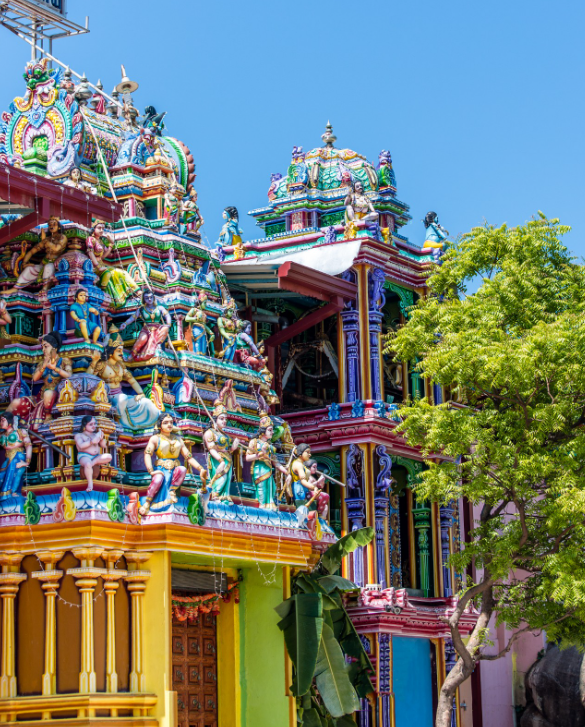
Shankari Devi Temple
Shankari Devi
Located in Trincomalee, Sri Lanka, this is one of the 18 Maha Shakti Peethas. It is believed that the groin of Sati Devi fell here. The temple is associated with the legend of Ravana and his devotion to Lord Shiva. It is a significant pilgrimage site for devotees, representing the power of the goddess in the island nation.
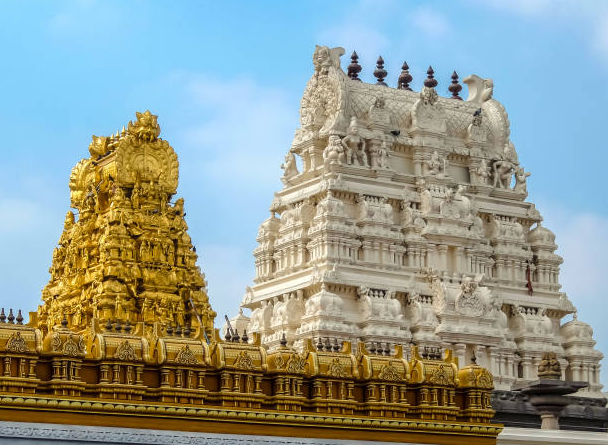
Kamakshi Amman Temple
Kamakshi Devi
The Kamakshi Amman Temple in Kanchipuram is a major center of Shakti worship. It is believed that the back part of Sati Devi fell here. The goddess is depicted in a seated posture (Padmasana), radiating peace and power. It is associated with Adi Shankaracharya and is one of the most important temples in Kanchipuram.
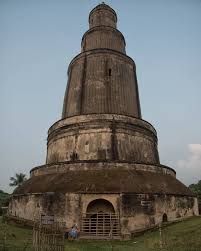
Shrinkala Devi Temple
Shrinkala Devi
Located in Pradmunyee (often identified with Pandua in Hooghly district, West Bengal), this Peetha is where the stomach of Sati Devi is believed to have fallen. The temple has a rich history and is a revered site for seeking blessings for prosperity and liberation.

Chamundeshwari Temple
Chamundeshwari Devi
Perched atop the Chamundi Hills in Mysore, this temple is dedicated to Chamundeshwari Devi, the fierce form of Shakti who slew the demon Mahishasura. It is believed that the hair of Sati Devi fell here. The temple is a major landmark and a symbol of victory of good over evil.
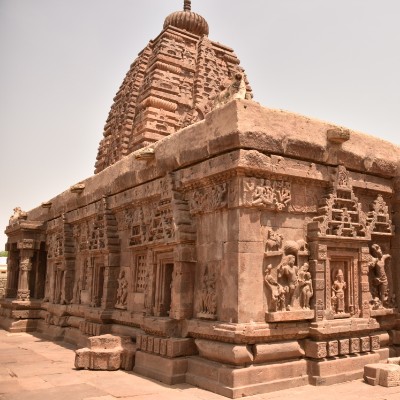
Jogulamba Devi Temple
Jogulamba Devi
Located in Alampur, Telangana, near the confluence of the Tungabhadra and Krishna rivers, this temple is dedicated to Jogulamba Devi. It is believed that the upper teeth of Sati Devi fell here. The temple is known for its unique architecture and is considered the 'Kashi of the South'.
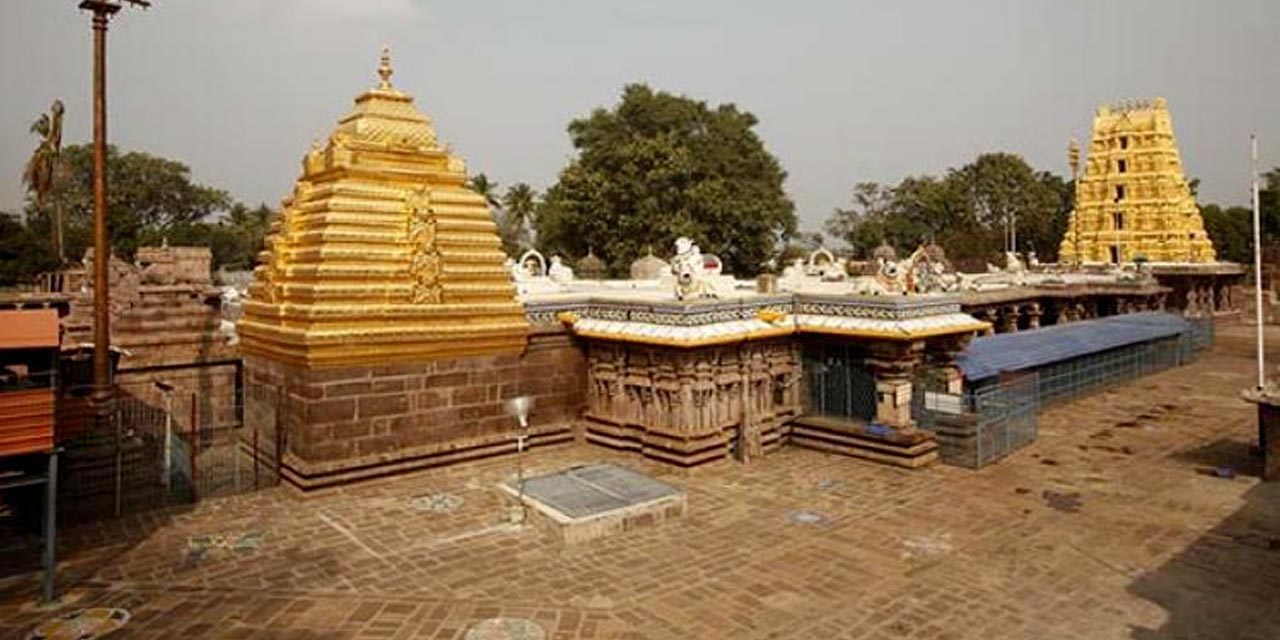
Bhramaramba Mallikarjuna Temple
Bhramaramba Devi
Srisailam is a unique holy site where a Jyotirlinga (Mallikarjuna) and a Shakti Peetha (Bhramaramba) exist together. It is believed that the neck of Sati Devi fell here. Bhramaramba Devi is worshipped as the form of Shakti who released thousands of bees to destroy a demon.
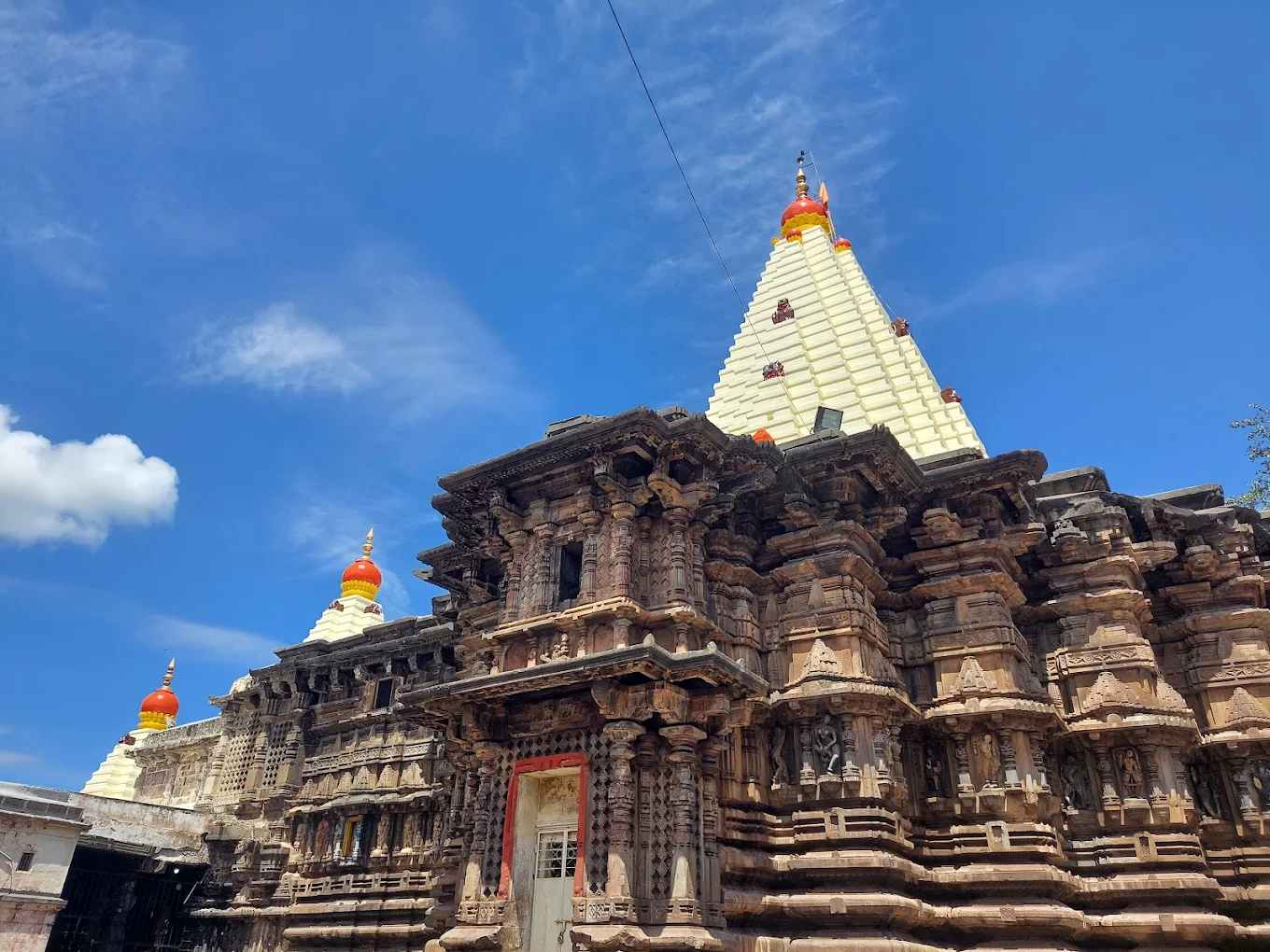
Mahalakshmi Temple
Mahalakshmi Devi
The Mahalakshmi Temple in Kolhapur is a revered Shakti Peetha where the eyes of Sati Devi are believed to have fallen. The goddess is known as Ambabai locally. The temple architecture is marvelous, and on specific days, the rays of the setting sun fall directly on the idol's face.
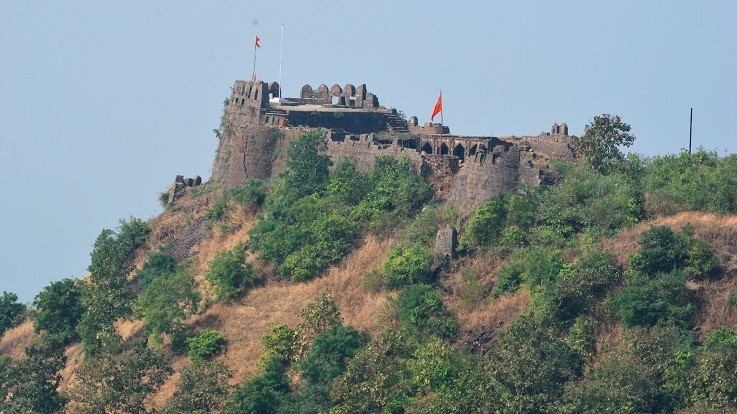
Renuka Temple
Renuka Devi
Located in Mahur, Nanded district, Maharashtra, this temple is dedicated to Renuka Devi. It is often associated with the falling of the right hand or head of Sati Devi. It is one of the three and a half Shakti Peethas of Maharashtra and holds immense religious significance.

Mahakaleshwar (Harsiddhi Mata)
Mahakali / Harsiddhi Mata
Ujjain is home to the Mahakaleshwar Jyotirlinga and the Harsiddhi Mata Shakti Peetha. It is believed that the upper lip or elbow of Sati Devi fell here. The goddess is worshipped as Mahakali and is a powerful symbol of time and destruction of ego.
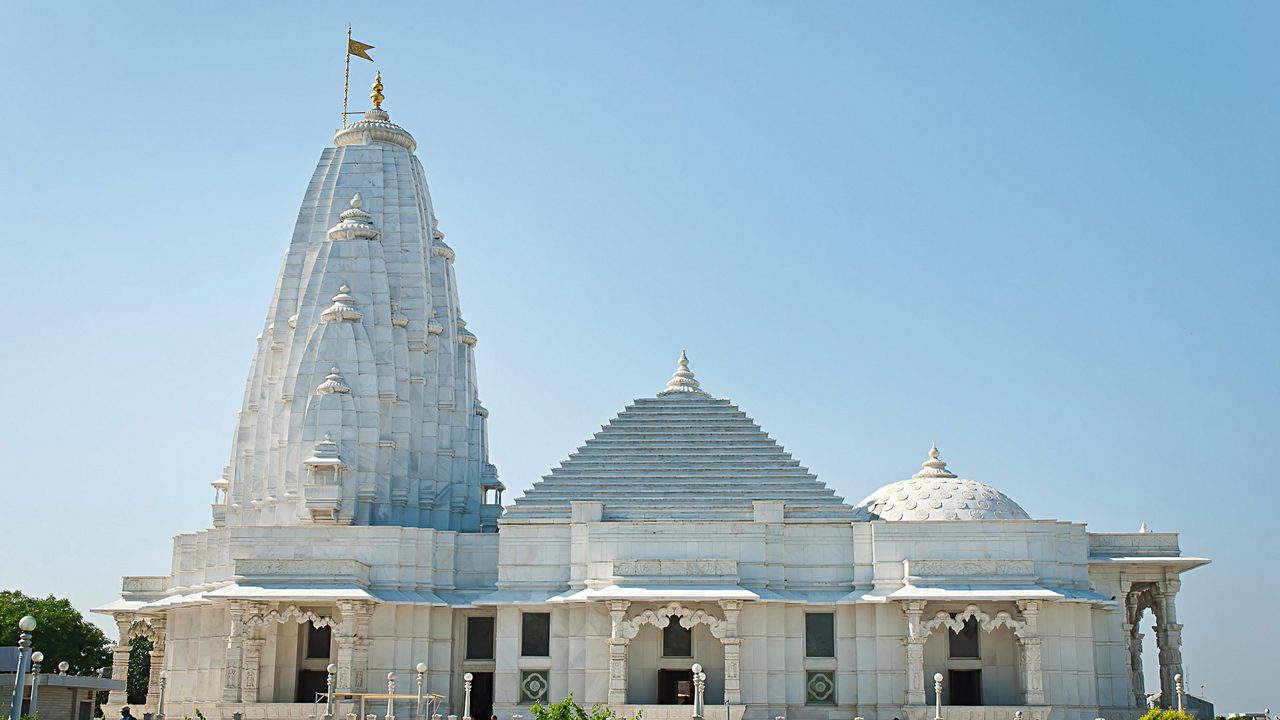
Biraja Temple
Biraja Devi
The Biraja Temple in Jajpur, Odisha, is dedicated to Biraja Devi. It is believed that the navel of Sati Devi fell here. The goddess is depicted as Mahishasura Mardini. The region is known as 'Viraja Kshetra' and is an ancient center of pilgrimage.

Bhimeswara Temple (Manikyamba)
Manikyamba Devi
Draksharamam is one of the Pancharama Kshetras and a Shakti Peetha. It is believed that the left cheek of Sati Devi fell here. The goddess is worshipped as Manikyamba Devi. The temple is known for its massive Shiva Lingam and architectural grandeur.
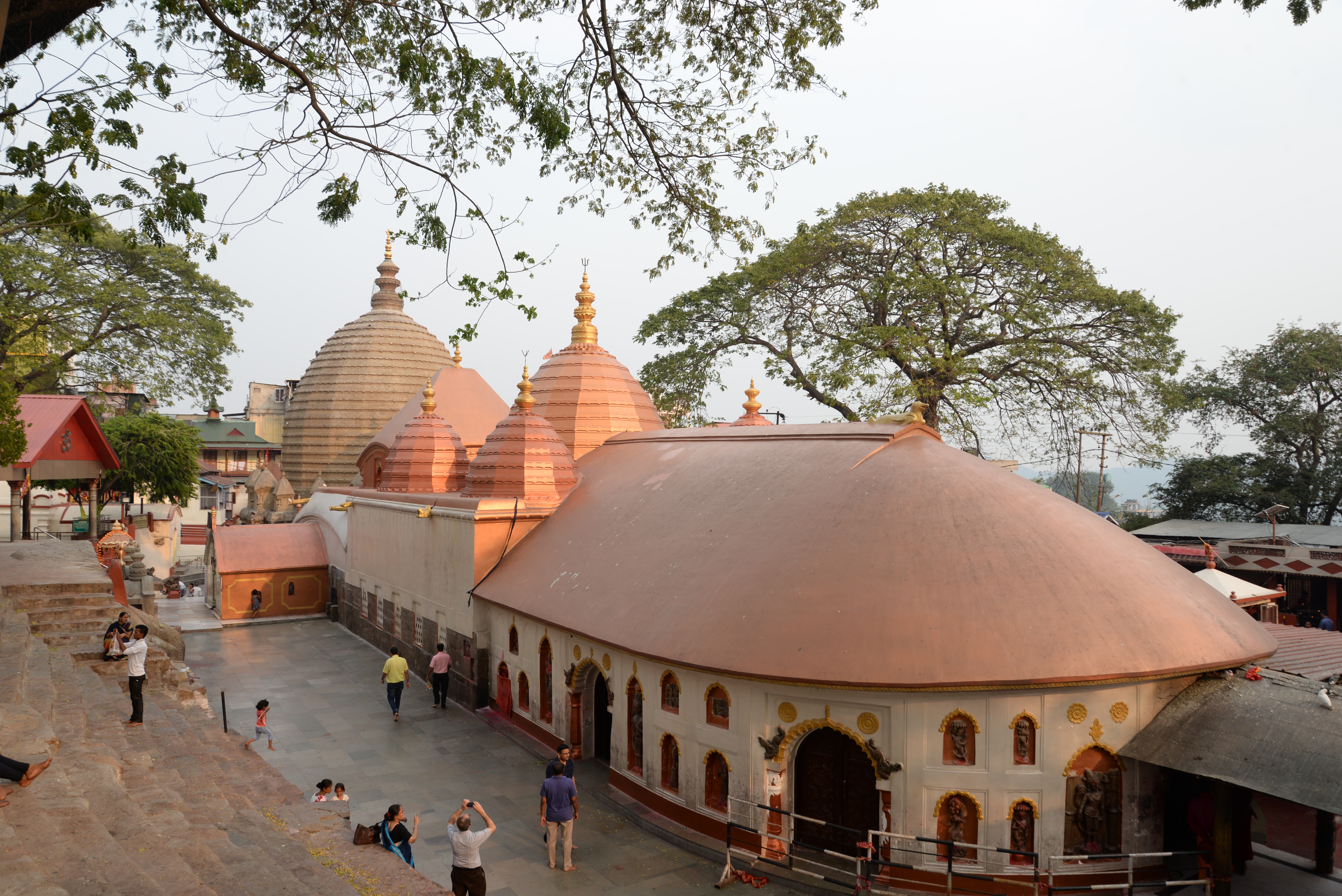
Kamakhya Temple
Kamakhya Devi
The Kamakhya Temple in Guwahati is one of the most powerful and famous Shakti Peethas. It is believed that the Yoni (reproductive organ) of Sati Devi fell here. The temple is a center for Tantric worship and celebrates the Ambubachi Mela, symbolizing the fertility of the earth.
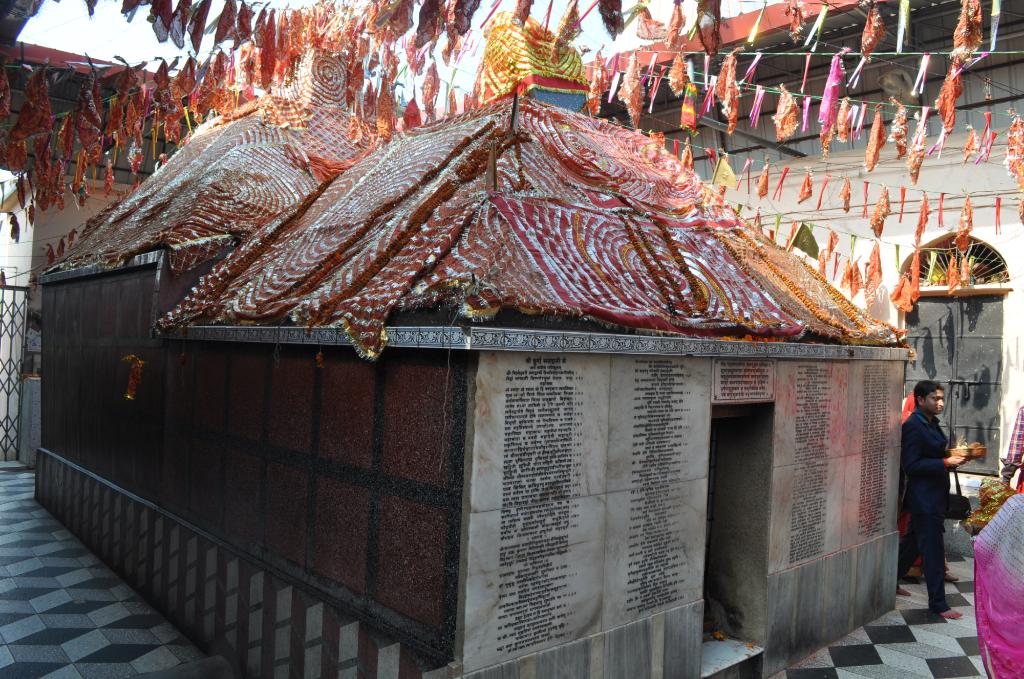
Mangala Gauri Temple
Mangala Gauri
Located in Gaya, Bihar, the Mangala Gauri Temple is dedicated to the benevolent form of the goddess. It is believed that the breast of Sati Devi fell here. The temple is an important pilgrimage site, especially for those performing ancestral rites in Gaya.
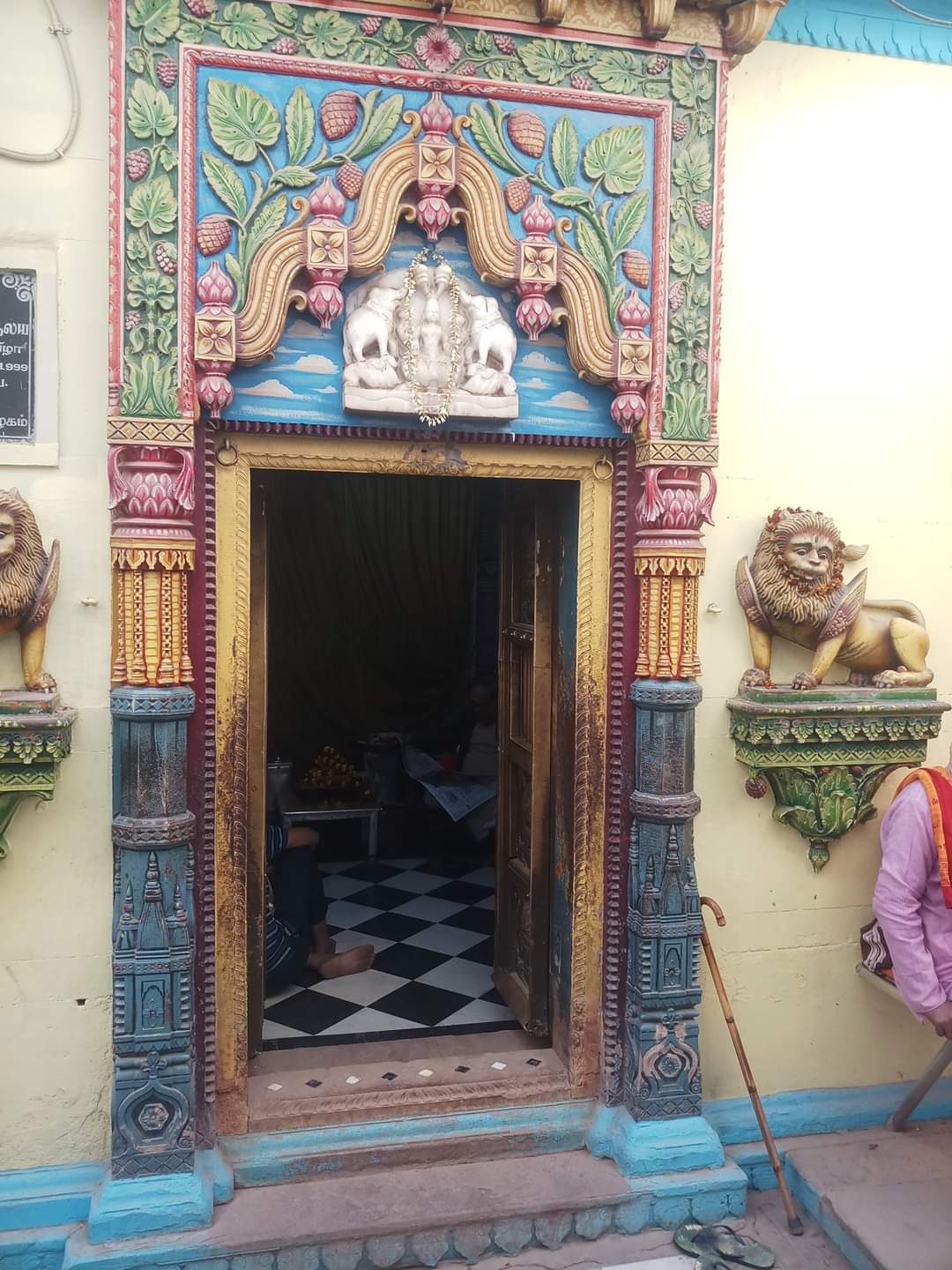
Vishalakshi Temple
Vishalakshi Devi
The Vishalakshi Temple in Varanasi stands near the sacred Ganges. It is believed that the earrings or eyes of Sati Devi fell here. The goddess is known as 'She with Large Eyes'. It is a spiritually charged site in the holy city of Kashi.
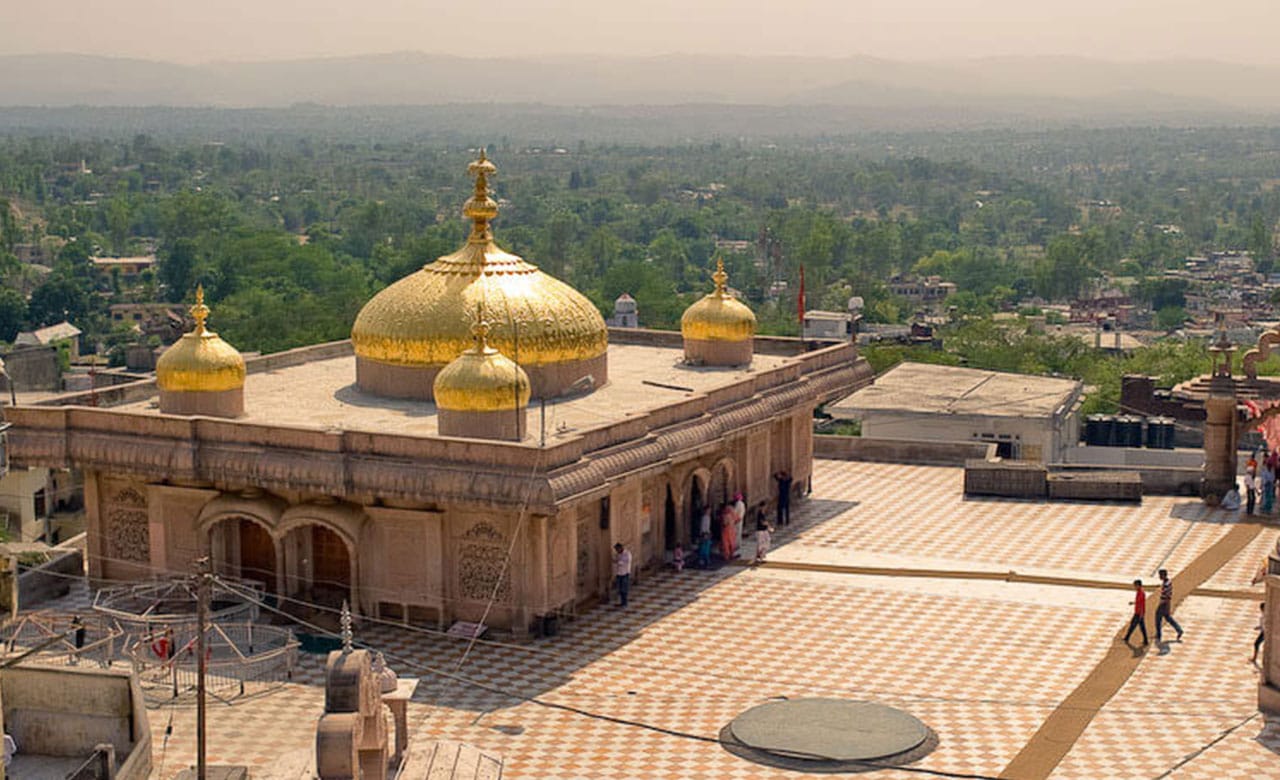
Jwalamukhi Temple
Jwalamukhi (Siddhida)
In the Jwalamukhi Temple in Himachal Pradesh, the goddess is worshipped in the form of eternal flames. It is believed that the tongue of Sati Devi fell here. There is no idol; the natural gas flames are worshipped as the manifestation of the divine mother.
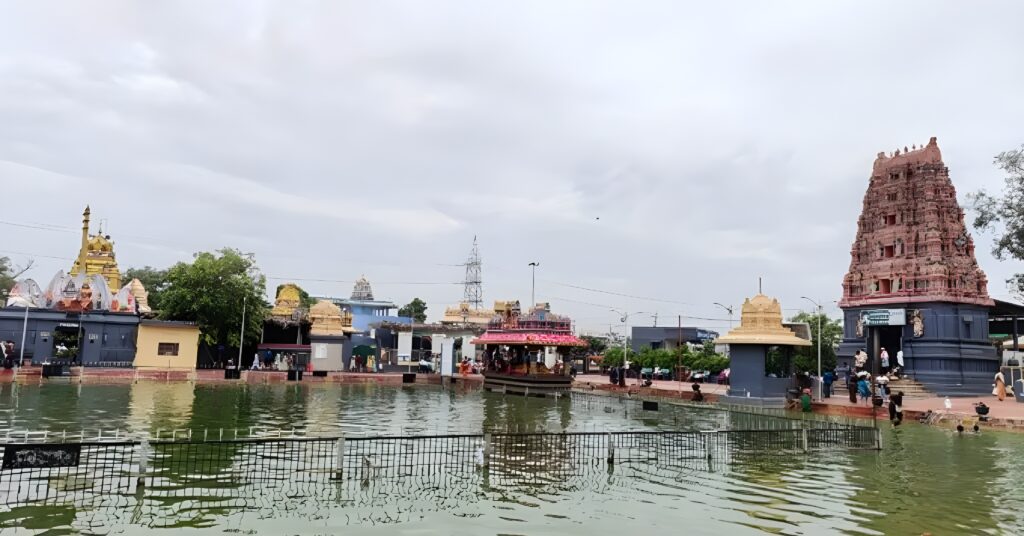
Puruhutika Devi Temple
Puruhutika Devi
Located within the Kukkuteswara Swamy Temple complex in Pithapuram, this is a significant Shakti Peetha. It is believed that the left hand or back of Sati Devi fell here. The goddess Puruhutika is worshipped as a bestower of boons.

Eka Veerika Temple
Eka Veerika Devi
Often identified with the Renuka temple in Mahur or a nearby site, Eka Veerika is listed as a distinct Peetha where the head of Sati Devi fell. It represents the severed head of the goddess, symbolizing the transcendence of the ego.

Tripura Sundari Temple
Tripura Sundari
The Tripura Sundari Temple in Udaipur, Tripura, is a major pilgrimage site in North East India. It is believed that the right foot of Sati Devi fell here. The temple is shaped like a tortoise (Kurma) and the goddess is worshipped as Soroshi.